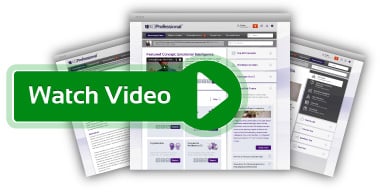Deming Wheel
This concept describes a Plan-Do-Check-Act wheel management model suggested by Deming. The model is used by companies to provide a systematic approach to achieving continuous improvement.
Technique Overview

Deming Wheel Definition
The Deming Wheel, also known as the Plan-Do-Check-Act (PDCA) cycle, is a structured model for continuous improvement in business processes. It comprises four iterative stages (plan, do, check, and act) and supports systematic problem-solving and operational refinement. Originating from the quality management philosophy of W. Edwards Deming, the PDCA model remains a core tool in strategic and operational management, including areas such as quality assurance and process innovation (Górka-Chowaniec and Popek, 2025).
Deming Wheel Description *
* The full technique overview will be available soon. Contact us to register your interest in our business management platform, and learn all about Deming Wheel.
Business Evidence
Strengths, weaknesses and examples of Deming Wheel *
* The business evidence section is for premium members only. Please contact us about accessing the Business Evidence.
Business Application
Implementation, success factors and measures of Deming Wheel *
* The business application section is for premium members only. Please contact us about accessing the Business application.
Professional Tools
Deming Wheel videos and downloads *
* The professional tools section is for premium members only. Please contact us about accessing the professional tools.
Further Reading
Deming Wheel web and print resources *
Deming Wheel references (4 of up to 20) *
- Abbes, N., Chaabouni, Y., Sejri, N. and Cheikhrouhou, M. (2019) ‘A new Lean Six Sigma hybrid method based on the combination of PDCA and the DMAIC to improve process performance: Application to clothing SME’, Industria Textila, 70(5), pp. 447–456. https://doi.org/10.35530/IT.070.05.1595.
- Agency for Healthcare Research and Quality (AHRQ), 2024. Plan-Do-Study-Act (PDSA) Worksheet, Directions, and Examples. Available at: https://www.ahrq.gov/health-literacy/improve/precautions/tool2b.html [Accessed 4 Jun 2025].
- Bravi, L., Murmura, F. & Santos, G. (2019) ‘The ISO 9001:2015 Quality Management System Standard: Companies’ Drivers, Benefits and Barriers to Its Implementation’, Quality Innovation Prosperity, 23(2), pp. 64–82. doi: 10.12776/QIP.V23I2.1277
- Górka-Chowaniec, A. and Popek, A., 2025. Attempt to use the Deming cycle (PDCA) in the process of implementing an information security management system. International Journal for Quality Research, 19(2), pp.371–386. https://doi.org/10.24874/IJQR19.02-01
* The further reading section is for premium members only. Please contact us about accessing the further reading.
Learn more about KnowledgeBrief Manage and how you can equip yourself with the knowledge to succeed on Deming Wheel and hundreds of other essential business management techniques

